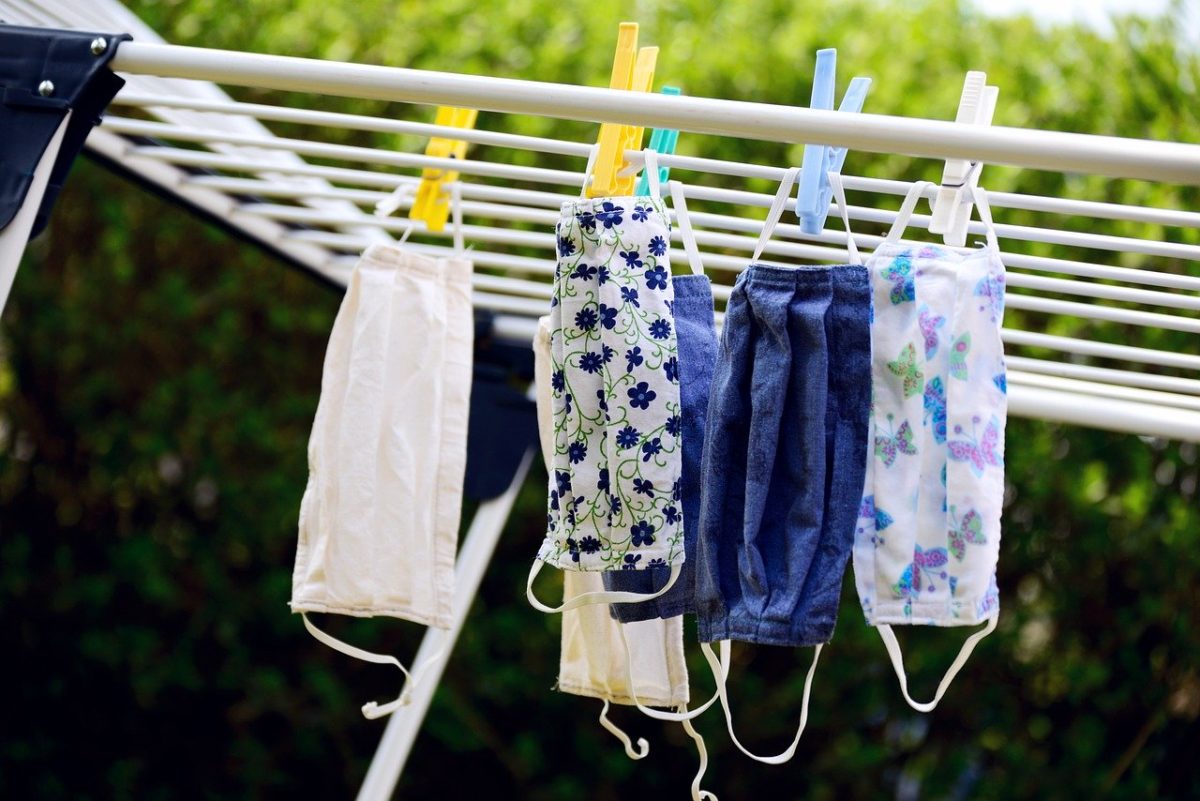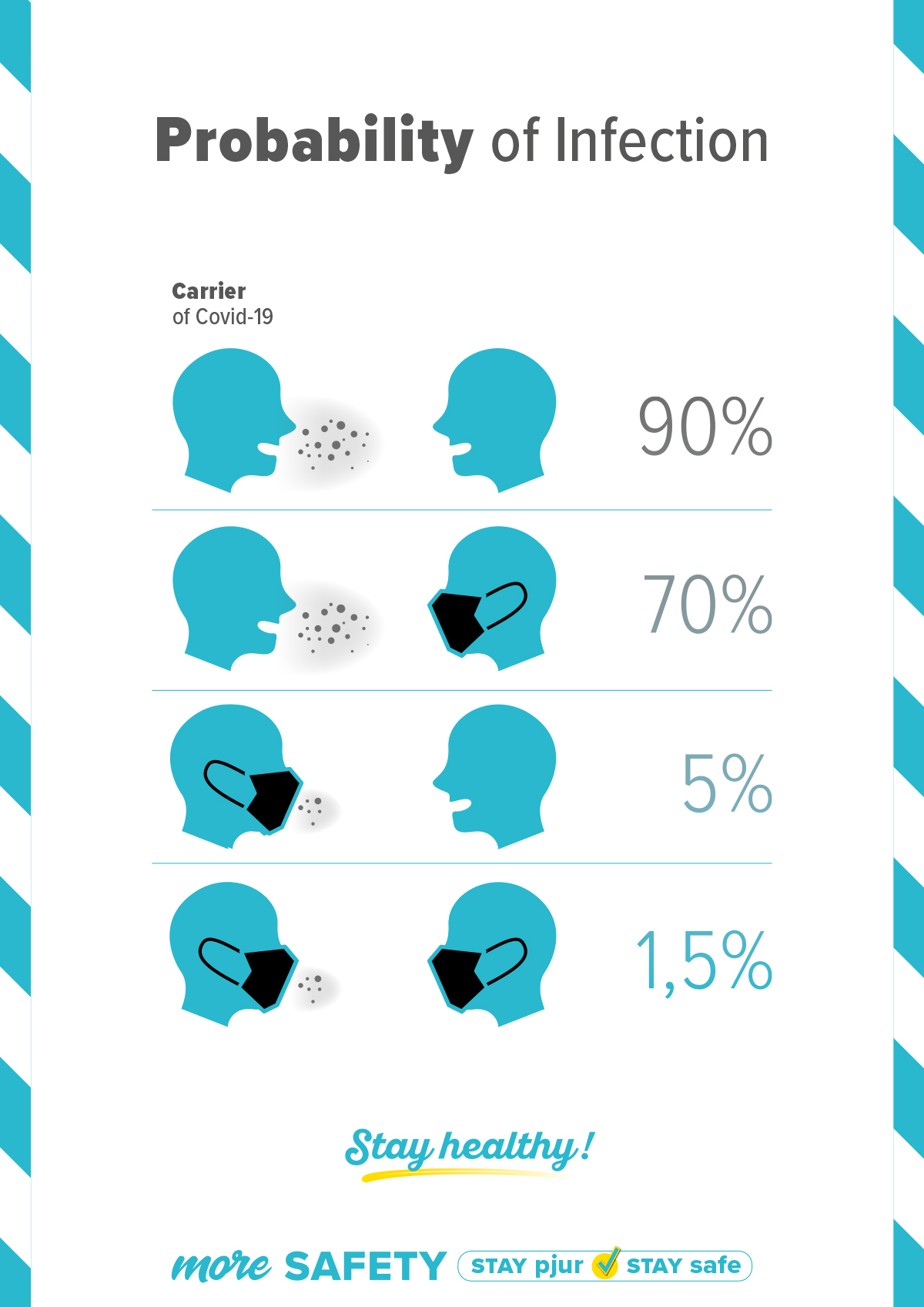
Germany, Austria, Italy, and Spain – these are just some of the countries where face masks are now required by law in a bid to stop the spread of the coronavirus pandemic. This requirement mostly affects shopping and local public transport. Yet the topic as a whole raises a number of questions. How exactly can a face mask protect us, what do we need to bear in mind when we’re wearing one, and, given the wide range of different options, what actually counts as a face mask? This is something we know a bit about and in this article we reveal all.
What types of face masks are available?
Take a look around while you’re out shopping or on the bus or train and you will see many different varieties of face masks. They can be grouped into three basic categories:
- Cloth masks, also known as mouth and nose masks, community masks or DIY masks, are face masks made from fabric. During the early stages of the spread of coronavirus, companies and individuals began sewing these mouth and nose masks, which cover the nose and mouth. Cotton is the most common material used for these masks. Tea towels, old T-shirts, or pillowcases have also been used.
- Surgical masks, or medical face masks, are used in hospitals andsimilar settings. They are usually green or blue and are intended for single use. By wearing them, doctors and nurses can protect their patients from potential bacteria and viruses.

medical-mask-5085513_1280 - Respirator masks, also called FFP2/FFP3 medical masks, are also used in healthcare settings. They are available with or without an exhalation valve. Those without an exhalation valve protect the wearer and everybody around them by filtering particles and aerosols from the air. Those with an exhalation valve only protect the wearer, as the air the wearer breathes will still be released into the air.
The effectiveness of face masks
The masks described above each have a different level of effectiveness. Cloth masks or mouth and nose masks mainly prevent the wearer from spreading droplets when speaking or coughing. As a result, they mainly protect other people. Nevertheless, the wearer also has a lower level of exposure, of course. The advantage of these fabric face masks is that they are reusable, washable, and breathable. Surgical masks have a similar action. They also protect others from so-called droplet ejection as a result of the wearer talking or coughing. FFP face masks are among the safest types available. They come either with or without an exhalation valve. Without this valve, they protect both the wearer and those around them, because viruses cannot get in or out. Those with a valve mainly protect the wearer, because the air that the wearer breathes escapes from the mask through the valve.
As a basic rule, we should all wear face masks to protect others, thus breaking the chain of infection. This means that the primary focus is not on protecting yourself, but on protecting the general public. After all, the droplets that we disperse in the air when we speak or cough can infect others. If everyone complies with the requirement to wear face masks, Covid-19 can be contained. The can be seen in the graphic below:

If everyone wears a cloth face mask, everyone will be protected. This is enough. FFP and surgical masks should be reserved for medical professionals.
How to guarantee the best protection possible
Simply wearing a face mask is not enough, however. There are also a few things you need to be aware of when using it to make sure everyone is protected:
- Before putting your mask on, you should wash your fingers with soap or disinfect them with sanitizer.
- Whether you are putting your mask on or taking it off, only touch it by the elastic that goes behind your ears or by the straps that you tie behind your head.
- Make sure your mask fits snugly. If the gap between the mask and your face is too big, it can prevent effective protection. Men with beards and those who wear glasses should be particularly careful with this.
- Even if you’re wearing a mask, try not to touch your face or the mask. There could be viruses or bacteria on your hands, which you could then transfer to your face or mask.
- When you take your mask off again, only touch it by the straps. Never touch the front of the mask, because there may be bacteria and viruses there, as we’ve already discussed.
- After removing your face mask, wash your hands again with soap or disinfect them with sanitizer.
How many times can a face mask be reused?
To answer this question, we need to distinguish between the three types outlined above again. Surgical masks used in hospitals are only intended to be used once. They should therefore be disposed of after a single use. Cloth face masks, on the other hand, are suitable for multiple use. In most cases, manufacturers will specify how many times the mouth and nose mask can be reused and how to clean it. However, as a general rule, keep the following points in mind:
- Cloth masks should ideally be washed after each use. They should always be washed if they are damp or dirty, however.
- Cloth masks can be washed at between 60 and 90 degrees Celsius. So throw them in the washing machine to kill bacteria and viruses.
- Alternatively, you could use a boiling water bath. Leave your face mask in the water bath for five minutes.
FFP masks are guaranteed to remain effective for several hours. Some masks are also reusable. You can check this by looking for an “R” symbol for “reusable”.
Wearing a face mask should help prevent the coronavirus from spreading further. This isn’t the only thing we need to do, though. It is also vital that we continue to observe other hygiene rules, such as maintaining a safe distance and washing our hands regularly.
We are here to help you with our pjur DESINFECT disinfectant. Together we can break the chain of infection!